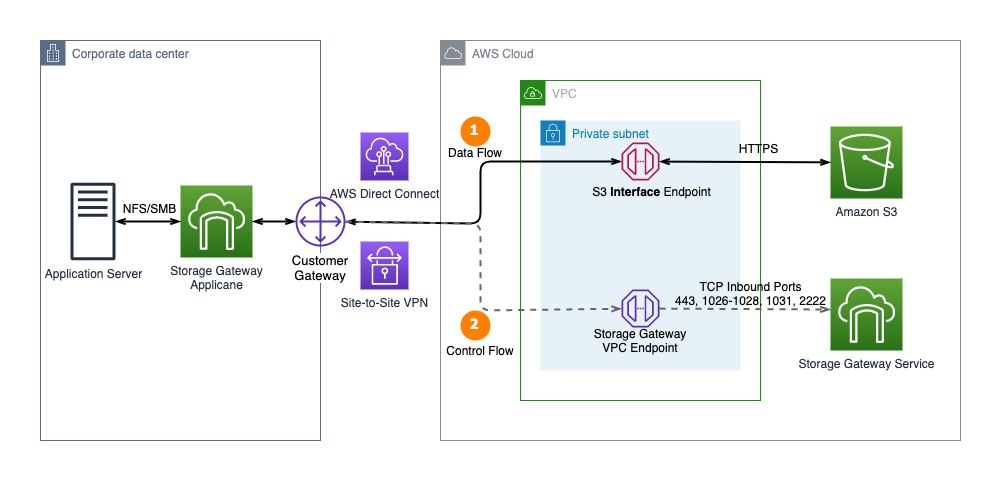AWS Architecture Blog
Category: Amazon Simple Storage Service (S3)
Swiftly Search Metadata with an Amazon S3 Serverless Architecture
As you increase the number of objects in Amazon Simple Storage Service (Amazon S3), you’ll need the ability to search through them and quickly find the information you need. In this blog post, we offer you a cost-effective solution that uses a serverless architecture to search through your metadata. Using a serverless architecture helps you […]
Connect Amazon S3 File Gateway using AWS PrivateLink for Amazon S3
AWS Storage Gateway is a set of services that provides on-premises access to virtually unlimited cloud storage. You can extend your on-premises storage capacity, and move on-premises backups and archives to the cloud. It provides low-latency access to cloud storage by caching frequently accessed data on premises, while storing data securely and durably in the […]
Optimizing your AWS Infrastructure for Sustainability, Part II: Storage
In Part I of this series, we introduced you to strategies to optimize the compute layer of your AWS architecture for sustainability. We provided you with success criteria, metrics, and architectural patterns to help you improve resource and energy efficiency of your AWS workloads. This blog post focuses on the storage layer of your AWS infrastructure and provides […]
Hybrid Cloud Architectures Using Self-hosted Apache Kafka and AWS Glue
Using analytics to gain insights from a variety of datasets is key to successful transformation. There are many options to consider to realize the full value and potential of our data in a hybrid cloud infrastructure. Common practice is to route data produced from on-premises to a central repository or data lake. Here it can […]
Securely Ingest Industrial Data to AWS via Machine to Cloud Solution
As a manufacturing enterprise, maximizing your operational efficiency and optimizing output are critical factors in this competitive global market. However, many manufacturers are unable to frequently collect data, link data together, and generate insights to help them optimize performance. Furthermore, decades of competing standards for connectivity have resulted in the lack of universal protocols to […]
Practical Entity Resolution on AWS to Reconcile Data in the Real World
This post was co-written with Mamoon Chowdry, Solutions Architect, previously at AWS. Businesses and organizations from many industries often struggle to ensure that their data is accurate. Data often has to match people or things exactly in the real world, such as a customer name, an address, or a company. Matching our data is important […]
Convert and Watermark Documents Automatically with Amazon S3 Object Lambda
When you provide access to a sensitive document to someone outside of your organization, you likely need to ensure that the document is read-only. In this case, your document should be associated with a specific user in case it is shared. For example, authors often embed user-specific watermarks into their ebooks. This way, if their […]
Expiring Amazon S3 Objects Based on Last Accessed Date to Decrease Costs
Organizations are using Amazon Simple Storage Service (S3) for building their data lakes, websites, mobile applications, and enterprise applications. As the number of objects within your S3 bucket increases, you may want to move older objects into lower-cost tiers of Amazon S3. In some cases you may want to delete the objects altogether to further […]
Analyze Fraud Transactions using Amazon Fraud Detector and Amazon Athena
Organizations with online businesses have to be on guard constantly for fraudulent activity, such as fake accounts or payments made with stolen credit cards. One way they try to identify fraudsters is by using fraud detection applications. Some of these applications use machine learning (ML). A common challenge with ML is the need for a […]
Choosing Your VPC Endpoint Strategy for Amazon S3
This post was co-written with Anusha Dharmalingam, former AWS Solutions Architect. Must your Amazon Web Services (AWS) application connect to Amazon Simple Storage Service (Amazon S3) buckets? Must the connection scale to accommodate bandwidth demands? AWS offers a mechanism called VPC endpoint to meet these requirements. This blog post provides guidance for selecting the right […]









